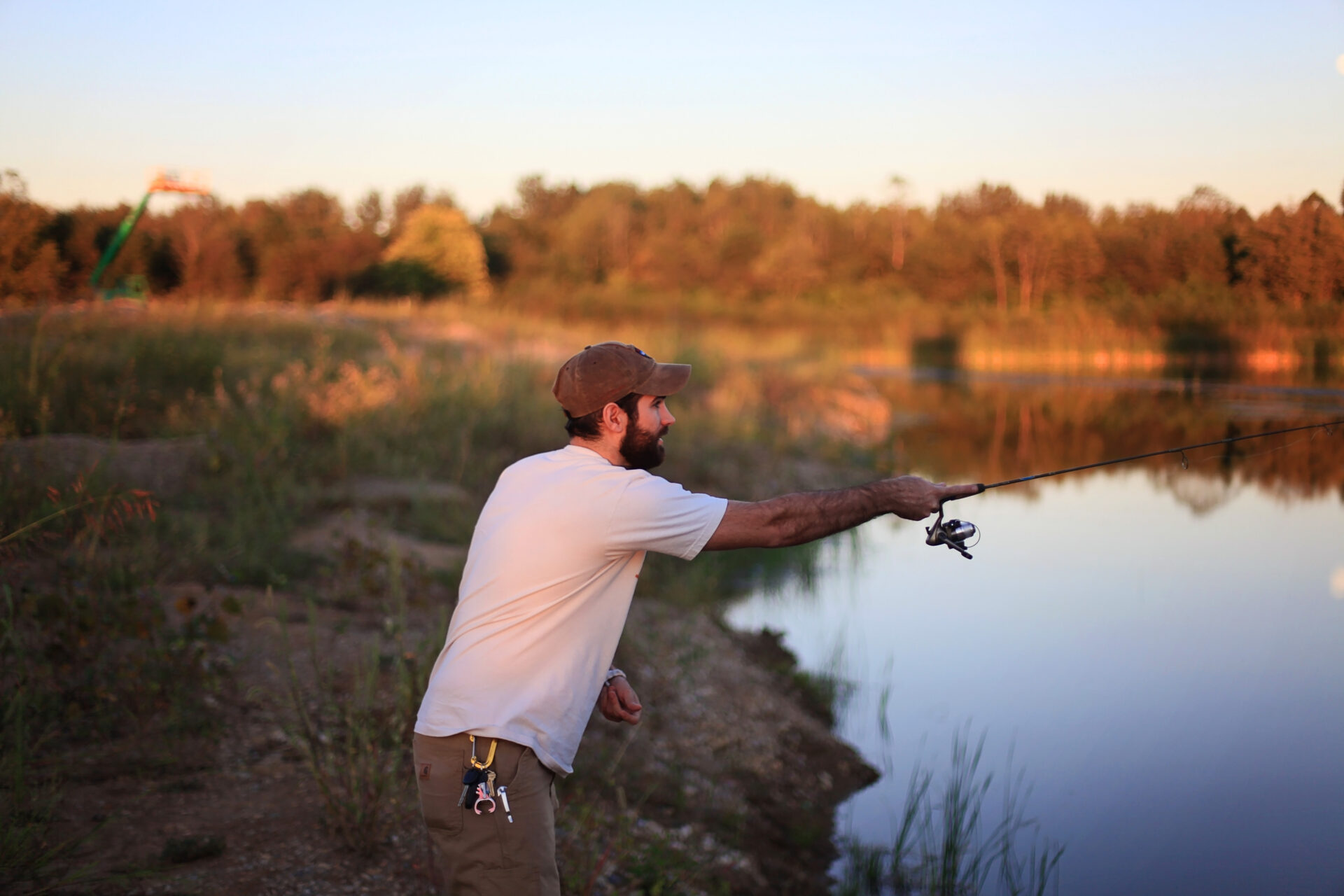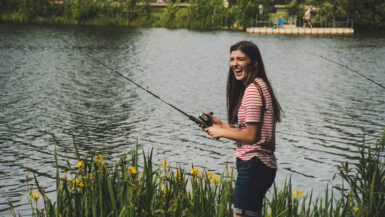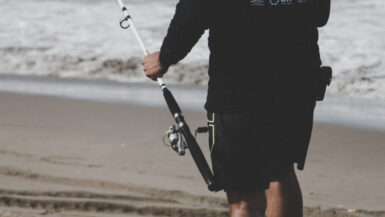Night fishing for freshwater fish can be a thrilling experience and a great way to connect with nature. With the right technique and some patience, you can enjoy a fruitful fishing expedition after dark. Whether you’re a beginner or an experienced angler, this article will provide you with tips and tricks to help you find and land more fish in the Dead of Night. Learn how to use proper light and lure techniques, the best times to fish at night, and how to stay safe while fishing in the dark. Let’s get ready to go night fishing!
Understanding Your Freshwater Ecosystem
Night fishing for freshwater fish requires knowledge of the aquatic environment. When fishing at night, understanding the various features of a freshwater ecosystem is essential. Start by identifying the type of habitat – are you fishing in a lake, river, wetland, or stream?
Recognizing Aquatic Plants and Animals
Familiarize yourself with common aquatic plants and animals that live in your freshwater ecosystem. Aquatic plants are extremely important in supporting life in a freshwater ecosystem and provide protection and food sources for the fish. Knowing what plants and animals live in your lake or river allows you to better understand the populations of fish and their behaviour in the water.
Observing Fish Migration Patterns
Fish migration is a key factor to consider when night fishing. Fish can migrate to different areas of the water to feed, hide, or spawn. Knowing where fish migrate can help you better navigate the water and achieve a successful catch. Watch the ecosystem throughout the day and observe any patterns in the behaviour of the fish.
Understanding Water Conditions
Water temperature, clarity, and flow are important features of a freshwater ecosystem. On the hottest or most humid days, the water can be warmer and less oxygenated, so the fish may behave differently. Low oxygen levels can reduce the activity of fish, so it’s important to understand the water conditions of the ecosystem you’re fishing in. Higher levels of clarity can also make it easier to observe the fish.
Researching Fishing Tactics
Before you begin fishing, research the best tactics to catch freshwater fish at night. Take into consideration the type of fish you’re trying to catch, the size of your bait, the type of tackle or rigs you’re using, and the most effective techniques for nighttime fishing. With the right knowledge and a bit of practice, you’ll be able to easily catch freshwater fish at night.
Equipment and Tackle Necessary for Night Fishing
Night fishing for freshwater fish requires a specific set of equipment and tackle to be successful. Rods and reels are the most important pieces of equipment and should be chosen carefully. Spinning rods and reels are ideal for night fishing as they are light and easy to cast, and reels that are designed for low-light conditions are a great choice. A medium-weight, 7-foot rod is a good option as it can cast a variety of baits and lures. It is also important to choose a rod with an anti-reverse reel to help reduce line twist.
Baits and Lures for Night Fishing
When it comes to lures, glow-in-the-dark options are ideal for night fishing. This makes it easier to spot fish in the dark. Small spinner baits, crankbaits, and soft plastics are also excellent choices. For bait, live worms and crickets are great options as they are easy to find and provide a natural food source for fish. It is also important to use bait that is easily scented to attract fish, such as shrimp, minnows, and artificial scents.
Additional Gear for Night Fishing
In addition to rods and reels, there are several other pieces of gear that are important for a successful night fishing trip. A headlamp with a red or green light is essential for navigating in the dark. A net is also a necessity for quickly getting your catch out of the water. A net that is large enough for the size of fish you plan to catch is best. Additionally, you should also bring along a cooler or bucket to store your fish until the end of the night.
Essential Safety Items for Night Fishing
Safety should always be the priority when fishing in the dark. A life jacket is essential and should be worn at all times. It is also important to bring along a first aid kit just in case. Additionally, a whistle or a loud alarm can be used to signal for help if necessary. A cell phone is also a smart item to bring along in case of emergency. Lastly, it is essential to be aware of your surroundings while night fishing and to be aware of any potential wildlife or weather threats.
Setting Up an Ideal Fishing Spot
When night fishing for freshwater fish, the first step is to find the ideal spot and get it ready for a successful fishing trip. Before heading out, it is necessary to do some research and find out what kind of fish are in the local body of water. This is important to identify the type of bait, lures, and tackle that will be necessary to increase the chances of catching a fish. Additionally, it is important to check the local regulations and make sure that any necessary permits are in order.
Creating a Fishing Environment
In order to set up an ideal fishing spot, anglers need to take the time to create a conducive environment. If fishing in a pier or shoreline, anglers need to make sure that there is a clear line of sight to spot any fish that may be close by. Additionally, it is important to take the wind direction and any obstacles into consideration when setting up. If fishing from a boat, anglers should try to find a spot that is likely to provide shelter from the wind and waves.
Using the Right Bait and Lures
Once the ideal fishing location has been set up, the next step is to choose the right bait and lures. This is especially important when fishing for freshwater fish. Some of the most popular baits for these types of fish are worms, crayfish, insects, and small minnows. Lures are also important to match the type of fish that is being targeted and to make sure that it is the right size.
Staying Patient and Calm
When night fishing, it is important to stay patient and calm. This can help anglers to maximize their chances of success. Additionally, staying in a good spot and using the right bait and lures can help anglers to attract the fish that they are after. It is also important to be aware of the moon’s light and to use it to your advantage when needed.
Providing Food for the Fish
When night fishing for freshwater fish, anglers also need to be aware of the food sources that are around them. If possible, it can be beneficial to provide additional food for the fish, such as bits of bread or cooked rice, which can help to attract more fish to the area. This can be especially helpful when targeting species like catfish, which are known to be attracted to baitfish.
Cleaning Up the Fishing Area
Finally, before leaving the fishing spot, it is important to make sure that the area is clean and all tackle and bait is removed. Trash, fishing line, and lures should all be collected and disposed of properly to help maintain the natural beauty of the area. This will also help to keep the water safe for other anglers and aquatic life.
Attracting Fish with Lights
Night fishing for freshwater fish can be an exciting way to catch prized catches. One way to catch more fish is to use luminous attractants such as lights to draw in fish. Lights can be used in various ways to draw in fish.
Subsurface Lights
Using a subsurface light can call in fish from far and wide. LED lights are popular for this method as they have a smaller profile. The goal is to attract fish from underneath, so the light should be deployed near the shoreline or in the deeper water of the lake or river. Position the light in a place where fish are likely to be feeding.
Underwater Lights
Underwater lights are great for night fishing in freshwater. The glow of the lights mimic the glow of the moon and attract fish to the area. The light should be placed in the water in a spot where it will draw the fish in, such as near the shore or in a deep area. Positioning the light attractor near a weed line or other structure can also be beneficial.
Surface Lights
Surface lights can be used to attract fish to the surface at night. This can be done by shining a powerful light into the night sky, as fish will be drawn to the light. It is important to make sure that the light is not too bright, as it may scare the fish away.
Fish Attractors
Using fish attractors such as scent enhancers or bait can also be an effective way to draw in fish at night. These attractors can be used by adding them to the water or suspending them from a buoy. Adding these attractors can help to draw in fish from nearby.
Night fishing for freshwater fish can be a great way to catch prized catches. By using lights, subsurface lights, underwater lights, surface lights, and fish attractors, anglers can increase their chances of catching more fish. All of these methods can be used to draw in fish in the darkness of night.
Choosing Bait and Lures
Night fishing for freshwater fish requires selecting the right bait. The type of bait and lure used will depend on the size and species of freshwater fish being targeted. Live bait such as worms and minnows are often preferred for larger freshwater fish such as bass and pike, as they provide a natural scent and movement. Smaller lures such as grubs, spoons, and spinners can be effective for smaller fish like rainbow trout or sunfish. Artificial lures are great for night fishing because they can be seen in low light conditions.
Incorporating the Right Kind of Lures
When selecting lures for night fishing, it’s important to incorporate different textures, colors, and sizes in order to attract fish. Night fishing lures typically use a combination of dark colors with reflective surfaces that can be seen in low light conditions. Glow-in-the-dark or fluorescent lures can also be effective. No matter what type of lures you use, it’s important to experiment with various colors and textures in order to find out which ones attract the most fish.
Adding Scent to Your Lures
Adding scent to your lures can also be a great way to attract fish. There are a variety of scents available, such as smelly shrimp, garlic, or anise oil, to name a few. Some lures come pre-scented, while others require adding a scent before using them. When using scented lures, it’s important to remember that the scent can dissipate quickly in water. Therefore, it’s necessary to frequently apply scent to the lures in order to keep the fish interested.
Storing Your Bait and Lures
It’s important to store your bait and lures properly in order to keep them in good condition for future use. If possible, store them in a cool, dry place that is away from direct sunlight. Make sure your lures are completely dry before storing them, as moisture can cause them to rust or corrode. Some lures require certain types of oils or lubricants that can help preserve them. It’s also a good idea to keep a tackle box handy in order to quickly organize your lures and baits.
Adapting to Night Conditions
Night fishing for freshwater fish can be rewarding but challenging. To be successful, anglers need to have the right gear and be prepared to adjust their technique for the night fishing environment. Here are a few tips on how to adapt to the conditions of night fishing for freshwater fish.
Adjusting Your Lures and Baits
In order to better attract and catch freshwater fish at night, anglers should use lures and baits specifically designed for night fishing. Bright colors and flashy lures will attract more attention from fish in the dark. These lures can be lighted for improved visibility in the dark. It is also important to use baits that emit a strong scent to attract fish. Live bait, such as minnows, can be effective in attracting fish during the night.
Using Lights to Attract Fish
Using lights is an effective way to attract fish at night. Lights can be used as a part of the angler’s setup to attract fish to the area. Specialized lures with built-in lights can be used as well. Strings of light can be draped over the area in order to attract baitfish, which will in turn bring in larger fish.
Choosing the Right Spot
When night fishing for freshwater fish, it is important to choose the right spot. Look for areas with structures such as rocks, ledges, or sunken logs which provide cover for the fish. Pay attention to the vegetation in the area as well, since weeds can also provide cover for the fish.
Adapting to Wind, Currents, and Water Temperature
It is important to consider the wind, currents, and water temperatures when night fishing for freshwater fish. Wind can cause the water to move, which can affect the location of the fish. Currents can also cause the water to move, in which case anglers should cast lures downstream. Water temperature can also affect the location of the fish, so anglers should pay attention to the temperature before fishing.
Making Reduced-Noise Reel Sets
Anglers should use a reel set up that makes minimal noise when casting. This will help reduce the noise around the area, making it easier to detect bites from fish. Reels with a silent spool and a low-friction drag will help reduce noise.
Using Stealth Fishing Techniques
Stealth fishing techniques can greatly increase the chances of fish being caught during night fishing. These techniques include reducing the amount of light around the boat, not making sudden movements, and avoiding talking during the fishing session. Stealth fishing can help keep the angler and the boat hidden from the fish, allowing them to get close and make a successful catch.
Filleting and Cleaning Fish
Filleting and cleaning your catch is a crucial part of any successful night fishing trip. Once you’ve caught a fish, it’s important to take care of it as quickly as possible. Begin by preparing a clean harbor or dock with enough space and light to fillet the fish. A kitchen knife or fillet knife is ideal for this job. Start by slicing the fish open from the throat down to the tail and remove the spine, internal organs, and any remaining bones. Cut off the head, belly, and fins before transferring the fillets to a covered plastic container for storage.
Safely Storing Your Fresh Catch
When it comes to storing your freshly-caught fish, proper temperature and hygiene are key. Immediately place the filleted fish in a cooler or fridge with crushed ice and store it at 40 degrees Fahrenheit or below. If you don’t have access to a cooler, wrap the filleted fish in wax paper and keep it on a bed of ice. Additionally, use separate containers for the fillet scraps to avoid contamination.
Staying Food Safe After Fishing
It’s important to take food safety seriously when you’re night fishing. Be sure to clean and sanitize all surfaces, knives, and cooking utensils that were used during the process. Additionally, it’s essential to avoid any contact between the filleted fish and the raw fish parts. Before storing the filleted fish, ensure it’s at a safe temperature and has been cooled down to the recommended 40 degrees Fahrenheit or lower.
Cooking Your Freshly Caught Fish
Cooking your freshly-caught fish is the final and most rewarding step in the night fishing process. However, be sure to follow food safety guidelines when preparing any fresh catch. Take extra care when handling raw fish to avoid contamination and make sure that any cooked fish reaches an internal temperature of 145 degrees Fahrenheit. This will help to ensure a delicious and safe meal for you and your family.
Successful Freshwater Fishing Made Easy
Night fishing is an exciting and rewarding experience, but it can sometimes be challenging. With the right knowledge, however, your night fishing trips can be successful. Choosing the right lure and bait, knowing when the fish are most active, and having the appropriate gear are all important factors to consider when planning a night fishing trip. With these tips and tricks in hand, you’ll be ready to go out and try your luck!





Leave a reply